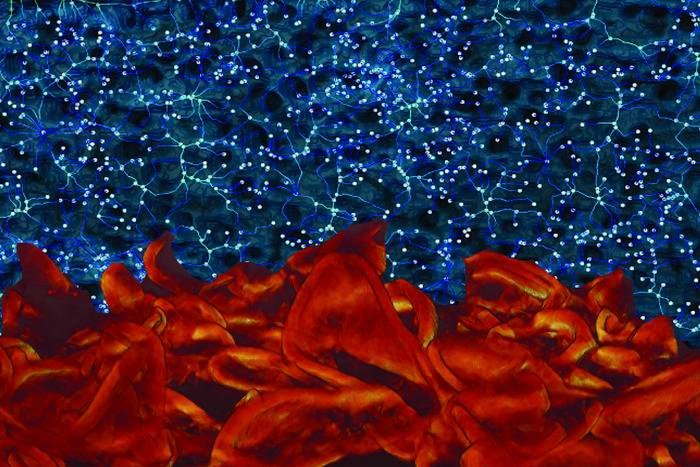
US-based researchers were able to unveil intricate nanoscale voids in three dimensions using electron tomography at nanometer resolution and mathematical theory. This breakthrough promises to enhance the performance of numerous essential materials in households and pivotal industries such as chemical, energy, and medical fields—especially those involving filtration.
Upon closer inspection, typical household filters, though appearing as solid materials with consistent perforations, reveal themselves to be intricate networks of countless randomly oriented minuscule voids, facilitating the passage of minute particles. Similarly, in industrial settings such as water and solvent filtration, wafer-thin membranes serve as the crucial barriers that segregate fluids from particles.
“The materials science community has been aware of these randomly oriented nanoscale voids within filter membranes for a while,” said Falon Kalutantirige, a University of Illinois Urbana-Champaign graduate student. “The problem was that the complex structure of the membrane as a whole—which looks like nanoscale mountain ranges when magnified—was blocking our view of the void spaces. Because we could not see them, we couldn’t fully understand how they affected filtration properties. We knew that if we could find a way to see them, we could then figure out how they work and ultimately improve filter membrane performance.”
Recently published in Nature Communications, this pioneering research led by Professor Qian Chen from the University of Illinois’ Department of Materials Science and Engineering and Professor Ying Li from the University of Wisconsin-Madison represents a significant milestone. It stands as the first endeavor to merge materials science with the principles of graph theory, aiding in the visualization and mapping of the random placement of these voids within filtration materials.
“The surfaces of the membranes we studied in this work look flat to the naked eye, but when we zoomed in using transmission electron microscopy, electron tomography, and atomic force microscopy, we could observe these voids nestled within these nanoscale mountainous landscapes that we call crumples,” said Kalutantirige.
To develop a quantitative predictive model and comprehensively understand the membrane surfaces, the team needed a method to precisely measure and map these “crumples”.
“Mapping and measuring alone will work for materials with a regular or periodic structure, making it mathematically simple to scale up our models and predict how structural properties will influence the material’s performance,” Chen said. “But the irregularity we observed in our study pushed us to use graph theory, which gives us a mathematical way to describe this heterogeneous and messy—but practical—material.”
Utilizing graph theory, the team unveiled a strong correlation between the unique physical and mechanical properties of random void spaces, leading to enhanced filtration performance.
“Our method is a very universal technique for describing materials,” Kalutantirige said. “Many things we use in everyday life and science are not made of materials composed of repetitive uniform structures. So, the beauty of the method, I think, is that we can capture the ‘regularness’ of irregular structures.”
The team anticipates that this new discovery will enhance the efficacy of many next-generation porous materials, including polymers used in drug delivery systems. “The title of this study hints at the concept of ‘beyond nothingness,’ and by that, we mean that these empty, void spaces are really important when it comes to developing the best filtration membranes,” Chen said. “This work is only possible with our wonderful team of collaborators. Xiao Su helped us with the membrane performance testing. Emad Tajkhorshid, Charles Schroeder, and Jeffrey Moore worked with us on the synthesis and analysis of the polymer systems.”

